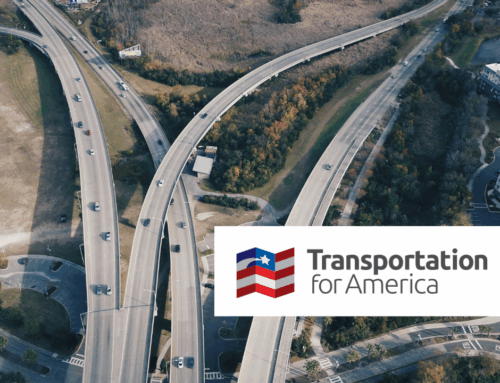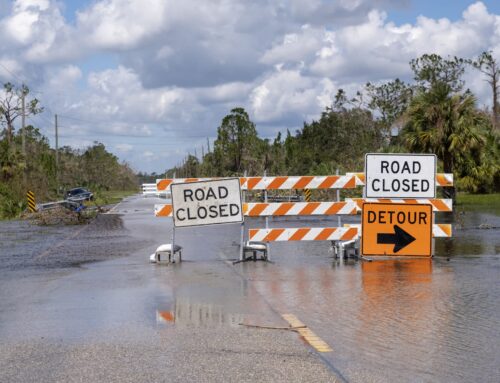Ten years ago, Hurricane Katrina and its impact on New Orleans and the Gulf Coast staggered the nation. A major American city was under water, more than 1200 fellow Americans were dead and hundreds of thousands of people were displaced with damaged or destroyed homes. Direct damage costs were in excess of $125 billion and estimates including the ripple effects on the economy were more than $200 billion. And Katrina was just the biggest storm in a year that also saw Rita and Wilma have massive impacts and the National Hurricane Center exhaust the list of names for storms and start using Greek letters.
The images scarred the nation’s conscience. Unfortunately, they haven’t had the same scale of impact on the nation’s policies to prepare for and respond to disasters. Policymakers have to reorient the nation’s policies to motivate individuals, communities, states, and federal agencies to reduce risk and increase the resilience of people and property. Disaster dollars should be used to prespond to future disaster risks and ensure that every dime spent on relief will help ensure that another dime doesn’t have to be spent the same way on some future disaster.
To that end Taxpayers for Common Sense has several recommendations.
Develop policies that promote planning and mitigation – Sometimes the best defense is a good offense. Federal disaster assistance should be provided on a sliding scale that promotes pre-disaster planning and mitigation investment at the community and state level. Further, assistance should be linked to concrete results, adoption and enforcement of adequate building and zoning codes, and mitigation of long term risk. All assistance should be tied to mitigation components.
Promote wiser infrastructure investments – And lead by example. Require federal government properties and projects to meet higher mitigation standards, including elevation. Require federal agencies, states, and localities that will use federal disaster funds to have plans in place to replace vulnerable infrastructure with more resilient building after a disaster. And ensure states and localities evaluate the viability of catastrophe bonds, insurance, or other financial instruments to fund rebuilding of publicly owned infrastructure.
Reform flood insurance – Katrina and other storms that year washed away any notion the highly subsidized federal flood insurance program was actuarially sound. After 2005, the program was more than $17 billion in debt to taxpayers. Superstorm Sandy eliminated any possibility that the program had sound financial footing and sent it into a $24 billion hole. But reform of flood insurance is more than just about money. Subsidizing flood risk puts citizens and property in harm’s way and discourages investments by individuals and communities to reduce their risks. Means tested assistance should be provided to help vulnerable individuals purchase insurance, but subsidies need to be transparent, time-limited, and targeted.
Emphasize permanent risk reduction – To date, much of the federal flood and storm damage reduction programs mitigate impacts from disaster. And they have helped with medium and large events, but for the mega events that seem to happen all too often, they end up exposing people and property to greater risk by creating a false sense of confidence. After the Great Flood of 1993, some frequently flooded Midwest towns were bought out and moved to higher ground. When floodwaters returned in 1995 there were no flood losses in those communities. This will not work everywhere, but one way to reduce flood and storm damage risk is to encourage moving out of harm’s way or discourage staying at risk. Simply put, federal funds shouldn’t be used to support decisions of individuals and communities that will likely require future federal funds be spent to recover from inevitable disasters.
Follow the money – All federal disaster funds should be tagged and required to be tracked from the federal coffers to the ultimate spending recipient whether it’s a contractor, an individual, or funds given to states or localities. This will provide taxpayers greater confidence that funds are being spent wisely and also help inform future disaster spending. In addition, too often after major disasters, Congress writes big checks and moves on to other items. Ten years after Katrina some of the money appropriated by Congress has not been spent. Much of the Sandy money hasn’t been spent. There is a fog of disaster where it is not immediately clear what the needs will be. Congress should provide money in tranches post disaster or at least include triggers that would award additional funds as needed.
At time of writing, Tropical Storm Erika is making her way across the Caribbean and may have a landfall in Florida. We’re not comparing Erika to Katrina. But it’s worth noting that Katrina was a relatively minor storm when she hit Florida and it was in the Gulf of Mexico (not Erika’s track) where it intensified to a Category 5 storm before becoming a Category 3 on landfall at the Mississippi-Louisiana border. We don’t know what will happen with these storms. After Wilma in 2005, there hasn’t been another major hurricane strike in Florida. The odds are we’re due. We can’t afford business as usual anymore. While disaster costs have been increasing across the board, the federal share of those costs has also been increasing significantly over the last several decades. Good policy doesn’t come out of emergency decision-making post-disaster. It comes from thoughtful deliberation in the calm between the storms.










